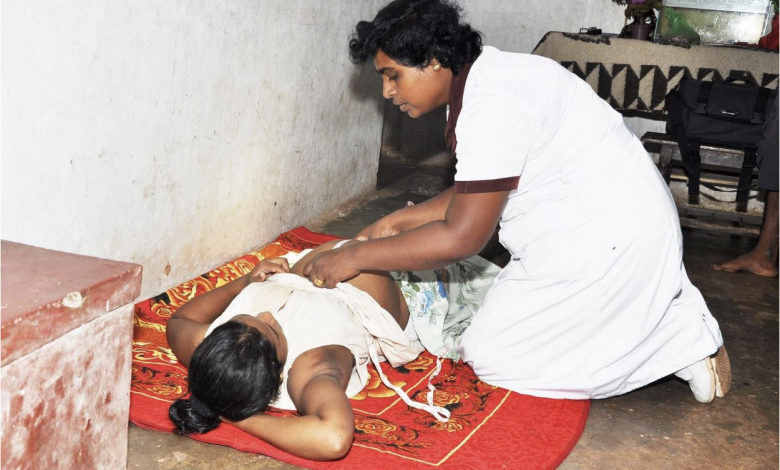Can Antivirals Really Stop the Flu? Sri Lanka Proves It’s Possible

Every winter, hospitals brace for an influx of patients with fever, cough and breathless nights. For decades the public-health playbook against influenza has leaned heavily on vaccines, personal hygiene and—where available—antivirals. But can antiviral drugs actually stop the flu from overwhelming a health system? Sri Lanka’s recent, WHO-supported experience suggests the answer is: not alone, but yes — antivirals, used smartly and early, can dramatically blunt the seasonal impact of influenza and protect the most vulnerable.
Below I explain what antivirals do (and don’t do), how Sri Lanka organized testing, treatment and supply, what the data show about outcomes, and what lessons other countries can adopt — plus the realistic limits and risks (resistance, cost, timing) to keep in mind.
How antivirals work — a quick primer
Antiviral drugs for influenza — most commonly neuraminidase inhibitors like oseltamivir (Tamiflu) and zanamivir, and newer agents such as baloxavir — don’t “kill” the virus instantly. Instead they block critical steps in the virus’s lifecycle, reducing viral replication in the respiratory tract. The practical effect is to shorten illness duration, lower viral load, reduce complications and (when given early) reduce the likelihood of hospitalization. Clinical guidance consistently emphasizes that timing matters: antivirals are most effective when started within 48 hours of symptom onset, and still may benefit high-risk patients when started later.
That mechanism makes antivirals an intervention oriented toward mitigating transmission and severity, not an instant cure or a vaccine substitute. But when a health system can rapidly identify cases and treat the right people quickly, antivirals become a powerful tactical tool.
What Sri Lanka did differently
Sri Lanka’s approach combined four practical pillars: expand rapid testing, prioritize treatment for high-risk groups, secure antiviral supply chains (including local manufacturing capacity), and integrate influenza treatment pathways into routine maternal and primary-care services. The World Health Organization has highlighted Sri Lanka’s program as a model: national clinical guidelines were updated to recommend timely oseltamivir use among high-risk patients, and public health teams focused on reducing hospitalization and deaths through early detection and treatment.
Concretely, the program included:
- Rapid testing at the point of care so clinicians could identify influenza quickly and make treatment decisions the same day.
- Clear triage rules to prioritize antivirals for the elderly, pregnant women, people with chronic diseases, and those with severe illness or signs of complication.
- Clinical pathway integration, placing antiviral provision into existing antenatal and primary-care services so pregnant patients and other priority groups could be reached reliably.
- Stock management and local production to avoid stockouts and reliance on international supply chains during peak demand.
That package — testing, triage, treatment and supply — is what made timely antiviral use feasible at scale.
The evidence: less hospitalization, shorter illness, fewer deaths
What changed when Sri Lanka implemented these measures? WHO reporting and recent analyses point to measurable reductions in severe outcomes during targeted seasons. Countries that prioritized early antiviral treatment for high-risk groups consistently show fewer hospital admissions and shorter hospital stays among treated patients, and Sri Lanka’s national program documented declines in seasonal influenza burden after scaling up the approach.
Broader studies reinforce these findings: pooled evidence across settings shows antivirals can reduce progression to severe illness and death when used early, and some observational studies link outpatient antiviral treatment to shorter hospital stays and lower mortality among hospitalized patients. That’s why public-health guidelines emphasize timely initiation: the earlier, the better.
Why Sri Lanka’s health system could make a difference
A treatment strategy is only as good as the system that delivers it. Sri Lanka’s strengths — high primary-care coverage, strong maternal-health platforms, and a centralized public-health apparatus able to issue and implement national guidelines — made it possible to operationalize rapid testing and targeted antiviral delivery. Where primary care is fragmented or access is poor, the same antiviral policy would struggle to reach the people who need it most.
In short: antivirals are tools; Sri Lanka’s health infrastructure supplied the toolbox, the processes and the workforce that let the tools be used reliably and fast.
Limits and caveats — antivirals aren’t magic bullets
Sri Lanka’s success is real, but it’s important to be precise about what “stop the flu” means. Antivirals reduce severity, transmission potential and hospital burden — particularly when targeted at high-risk groups — but they do not replace vaccination, non-pharmaceutical interventions (hand hygiene, masks when appropriate), or surveillance. Vaccines remain the primary prevention strategy because they reduce infection risk in the first place; antivirals are a complementary mitigation strategy that reduce harms when infections occur.
Other key limits:
- Timing window: Delayed treatment is less effective. If patients present late, the benefit shrinks.
- Resistance risk: Widespread or improper use can select for resistant strains. Ongoing antiviral susceptibility monitoring is essential. Recent surveillance work in Sri Lanka and the region has tracked susceptibility to neuraminidase inhibitors, informing treatment guidance.
- Cost and access: Antivirals are not free. For low-resource settings, financing, procurement and local production matter if a program is to be sustainable.
- Not a community-level prophylactic fix: Antivirals given to symptomatic people help, and in certain settings prophylactic use for close contacts can reduce spread — but mass prophylaxis is logistically and financially challenging and risks accelerating resistance.
The global evidence base — what studies say
The last few years have produced stronger real-world evidence on antiviral impact. Clinical and observational studies find that early antiviral therapy reduces hospital length of stay, lowers complication rates and may decrease mortality among hospitalized patients with severe influenza. Trials and meta-analyses also suggest neuronal inhibitors and the newer endonuclease inhibitor (baloxavir) reduce symptom duration and viral shedding, which has plausible effects on transmission dynamics at the population level — especially when combined with rapid testing and case finding.
Policy reviews comparing national guidelines in the Asia-Pacific region note that countries with explicit early-treatment policies and accessible antivirals showed better outcomes during seasonal waves. Sri Lanka’s updated clinical guidance — recommending oseltamivir for high-risk groups and hospitalized patients — aligns with that evidence.
Cost-effectiveness: a realistic appraisal
No public-health strategy exists in a vacuum. Is providing antivirals at scale a smart financial move? Economic analyses are context dependent, but targeting antivirals to high-risk groups and integrating treatment into existing services often proves cost-effective because the intervention averts expensive hospitalizations and ICU stays. Sri Lanka’s health economists and program managers have used such modeling to guide decisions about where and how to deploy antivirals alongside vaccination programs. In settings with strong primary care and modest drug procurement costs (or local production), the return on investment can be substantial.
Operational lessons other countries can borrow
If your health ministry is thinking “could we do what Sri Lanka did?”, here are practical, evidence-based moves that matter most:
- Prioritize rapid diagnosis plus fast treatment — point-of-care testing shortens the time from symptoms to therapy. When testing isn’t available, triage rules to treat high-risk symptomatic people promptly are essential.
- Target antivirals to who benefits most — elderly, pregnant people, those with chronic health conditions, and those with severe illness. Universal mass treatment is rarely necessary or sustainable.
- Secure supply chains and consider local manufacturing — stockouts negate all operational gains. Sri Lanka emphasized supply reliability to ensure antivirals were on hand when needed.
- Integrate into routine services — using antenatal care clinics and primary care makes it easier to reach priority groups quickly.
- Surveillance and resistance monitoring — continuous genomic and phenotypic surveillance ensures treatment remains effective and flags resistance early. Sri Lanka participates in regional surveillance efforts.
The human story: protecting mothers, elders and children
Policies are ultimately judged by lives saved and suffering averted. Sri Lanka’s emphasis on integrating antiviral pathways into maternal health — so pregnant patients could access treatment promptly — illustrates the human payoff. Pregnant women are at higher risk of complications from influenza; timely antiviral treatment reduces the chance of severe disease and adverse outcomes for mothers and babies. The same logic applies to elderly people and those with chronic illnesses: early therapy prevents deterioration that often requires costly and resource-intensive hospital care.
What about the risk of resistance?
Antiviral resistance is a real concern — not a hypothetical one. That’s why Sri Lanka and others pair targeted antiviral use with laboratory surveillance of circulating strains to monitor susceptibility. When resistance patterns change, clinical guidance can be adjusted (alternative agents, stewardship measures, or prioritizing vaccination). The balance is stewardship plus use: avoid indiscriminate, unmonitored mass use, but don’t withhold effective therapy from people who need it.
Conclusion: are antivirals a way to “stop” the flu?
If “stop” means “prevent every infection” — no, antivirals cannot replace vaccines and public-health measures. But if “stop” means “prevent many hospitalizations, shorten illness, reduce deaths and relieve pressure on hospitals during peak seasons” — Sri Lanka’s example shows the answer is a clear yes, provided antivirals are used as part of a coherent, timely and well-resourced public-health program. The combination of rapid testing, targeted early treatment, robust supply chains and integration into primary and maternal care is what made the difference.
Other countries can replicate the model, but success depends on local health-system strength, financing, and surveillance capacity. Antivirals are powerful tools in the influenza toolbox — not the only tool, but a crucial one when wielded thoughtfully.



